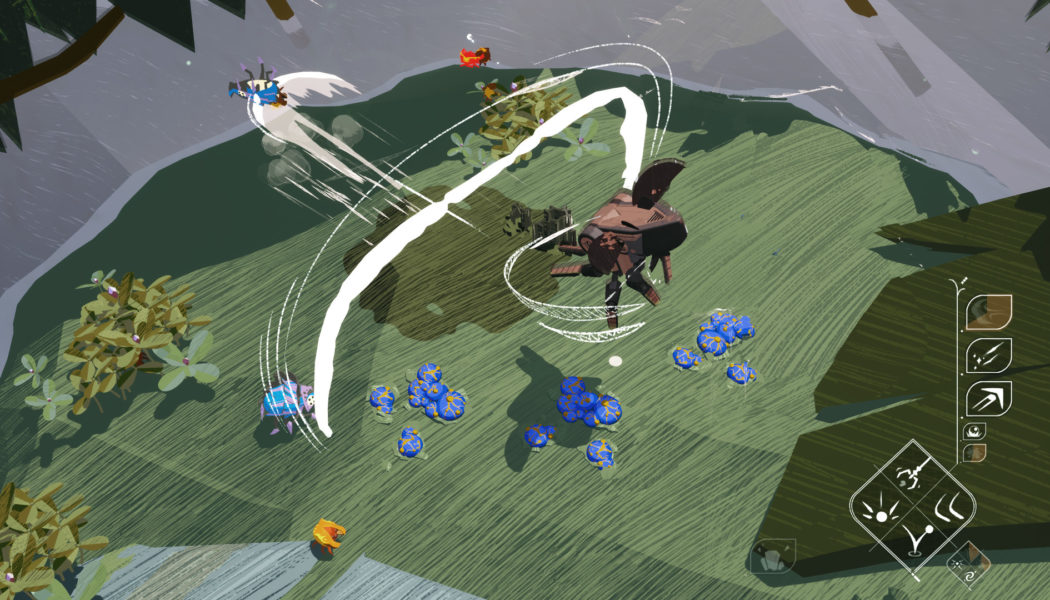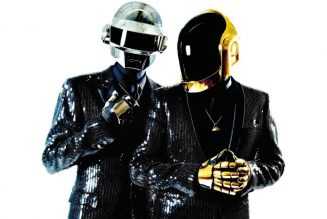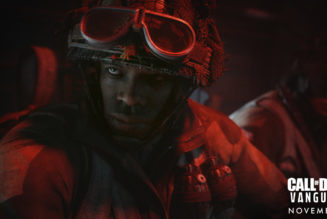
Anyone who’s delved into any of Flight School Studio’s games already knows that there’s really nothing else like them. Titles like Creature in the Well and Manifest 99 are the kind of weird little indie adventures that a larger studio wouldn’t dare to touch.
Their most recent release, Stonefly, is their biggest and most robust game yet, but it’s certainly not any less strange. It combines surprisingly strategic combat, customizable mechs, a Pixar-like visual and narrative appeal, and a supremely relaxing atmosphere, all scaled down to the size of insects. Will it appeal to everyone or compete with the biggest names in the industry? Almost certainly not, but that’s not what Creative Director Adam Volker and Game Director Bohdon Sayre are after.
The Flight School Studio team wants to put forth unique experiences, and so far they’ve managed to pull that off with each one of their releases, including Stonefly. SPIN caught up with the duo alongside the game’s surprise composer, Natureboy Flako, to chat about the recent adventure.
SPIN: With Stonefly obviously being a very chill and unique game, how did you first build the atmosphere for it?
Bohdon Sayre: It’s all about the vibe, right? We started the game with a goal for the mood. The story itself was kind of just a mood and a mental space. The music lends a lot to that, and I feel like we were trying to create something unique in that space. We wanted to create original mechanics and unique characters, but we also just wanted to create a mode of being that was a little bit different that you could just really enjoy and hang out and spend a bunch of time.
Adam Volker: We wanted to give players somewhere to go where they can escape and explore that was fantastic and would inspire their imagination. That’s really what we hoped to achieve. We want to take them on a journey and find cool new places to go.
Natureboy Flako: I think the music provides an important layer to define the character of the game and any scenario within. It sets a unique vibe that is hopefully welcoming and interesting to listen to.
Speaking of the music, what was it like to design a soundtrack for the game, considering that’s something you’ve never done before?
Flako: Luckily, it wasn’t much different to my usual approach of creating music. Of course, we had to make sure to meet a few requirements, but overall, I was very lucky to have been given a lot of freedom and trust by the entire team. This allowed me to feel myself in the game’s world even easier and to freely dive into my creating space.
Volker: He did such a great job. We were trying to make something really out there, and we had some of his tracks on a playlist that we were using as temporary music that we put in the game. It was just so unique and interesting that we were like “Let’s just ask him if he’s interested in making game music.” I’m so glad that worked out, because I feel like it’s one of the most unique soundtracks out there.
One of the things that really stands out about Stonefly is how simple, yet deep the gameplay is. Seeing as how the entire thing revolves around knocking bugs off of platforms, what was the thought process behind the combat?
Sayre: We started with “How does the player move around?” First it was things like jumping and getting caught in the wind, and then we had this concept that both the player and the creatures in the world can anchor themselves to the ground, which is something bugs do. Like if you’ve ever blown on a bug and it didn’t go away, it’s because they’re really good at sticking around. We evolved that into behaviors that tie into other features of the world, and then worked that back into what abilities and tools the player would need to be able to interact with them. You can develop the player and their abilities, develop the environment, develop the characters and their behaviors, and then repeat.
Volker: I feel like we tried to answer some really big questions right at the start, like “What would it be like to be really small?” “What do we think is interesting about the way bugs move?” And then it was a brick-by-brick approach where we would make a decision about the way the player moves, and then add to that — or go back to the bugs and add to that.
And in addition to everything else, Stonefly is probably the smallest-scale mech game of all time. Where did the inspiration come from to make kind of a classic customizable mech game, but at the size of an insect?
Volker: For me personally, I love the way that bugs look when you zoom all the way in on them. They’ve got the horns, the spikes, the antenna, the shells, all that stuff. I think it was an easy conclusion for me to be like “Let’s make a metal version of that, and let’s put a little person in it to pilot it.” And then I think mechs was just the best word to describe what we designed.
Sayre: I’m a big anime fan, so I saw it like Gundam and all that stuff — even like Voltron — but at a very small scale. And we like bugs, so it was like “Should we do bugs, but they’re mechs?” And then once we started doing mechs, there was tons of room to play with customizations and things like that.










